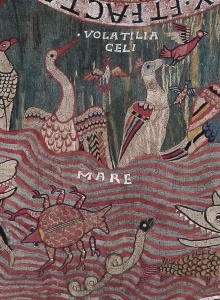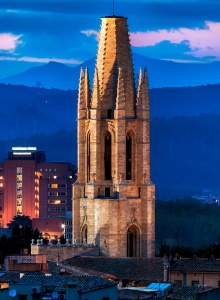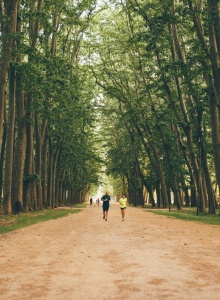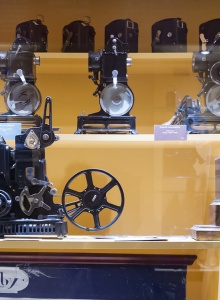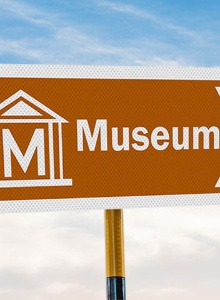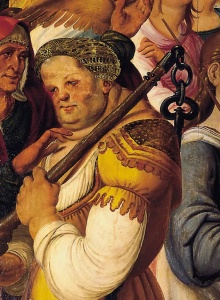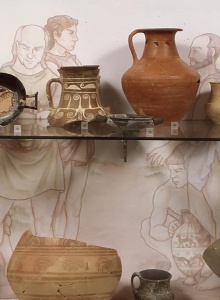Known as the ‘City of the Four Rivers’, Girona's historic quarter is dominated by medieval buildings and Roman, Arab and Hebrew influences.
Nestled in the Ter valley, where four rivers converge, we find the city of Girona. One of these valleys, the Onyar, divides the historic centre from the modern city.The old centre of this Catalan city preserves traces of its long history, from the time it was founded by the Romans in the 1st century BC. It is to them that we owe the original city wall, the remains of which stretch from the Paseo Arqueológico to the Jardines de la Muralla.
The Força Vella
Framed within this walled enclosure (the Força Vella) stands the Cathedral. Its Romanesque origin is evident in its fortress-like appearance and strategic location, although the most remarkable element is an immense Gothic nave, the widest in medieval European architecture. It houses one of the finest examples of Catalan Romanesque textiles, the Tapestry of Creation. Next to the cathedral's entrance steps is the Pia Alomoina, a former charitable institution built in the Gothic style.Girona has other key pieces of religious architecture, such as the Benedictine monastery of Sant Pere de Galligants, a historical-artistic monument; or the chapel of Sant Nicolau. These are Romanesque temples whose apses and octagonal domes deserve a good look, as they make up key elements of the Catalan Middle Ages. Surrounded by gardens stands the convent of Sant Doménec, a Gothic building and a clear example of the importance of religious orders in the colonisation and repopulation of Catalonia during the Middle Ages.Important Arab and Hebrew art also belongs to this historical period, the result of the centuries of coexistence between these cultures and Christianity. We will also discover a multitude of small streets that made up El Call, Girona's Jewish quarter. Força Street is the central axis of this neighborhood that had a synagogue and Kabbalistic study centers. The Plaça de l'Oli and the Plaça del Vi retain all their flavour; and between them, some of the finest gems of medieval palatial architecture can be found, such as the Fontana d'Or. El Call is one of the best preserved Jewish quarters in Spain today.Not far from here, a Capuchin convent houses the Arab Baths, where there is a remarkable small temple raised on eight slender columns and crowned by an octagonal dome.Before crossing the river and heading towards modern Girona, we can climb up to the bell tower of Sant Feliu or go to the Pont de Pedra over the Onyar, where we can get views of the entire city centre and its façades painted in ochre, indigo and copper. On the other side of the river we find the most beautiful examples of Catalan modernism signed by Rafael Masó. Notable buildings include the Teixidor Factory and the Casa de la Punxa. The Hospital de Santa Caterina, a baroque-style building from the 17th century, is also located in this area. On the other side of Passeig de la Devesa lies one of the recreational places of the people of Girona, the Parc de la Devesa. It is an exotic forest of mainly banana trees, which contrasts sharply with the medieval architecture of the city.
The Costa Brava
Girona's unique location, between the last stretch of the Pyrenees mountain range and the Costa Brava, which meets the Mediterranean Sea, makes it easy to explore the entire province. The coastline that stretches from Portbou (in the north) to Blanes (in the south) is full of medieval temples, fishing villages, Roman ruins, long beaches and coves with transparent waters among cliffs. In all of them, the union of sea and mountains makes up an unforgettable landscape. Places not to be missed include El Port de la Selva, with its monastery of Sant Pere de Rodes; Cap de Creus Natural Park; the landscapes of Cadaqués and the Gulf of Roses; historic-artistic sites such as Pals; or walled towns on the edge of the sea, such as Tossa del Mar. And these are just a few examples.In the heart of the Costa Brava, in the town of Begur, on the beach of Aiguablava is the Parador de Turismo. It is a modern construction that has all kinds of leisure facilities, as well as enviable views of the cliffs of Punta Dés Muts on which it is situated. This beautiful environment, surrounded by sea and pine forests, becomes the perfect place to discover Girona cuisine. The combination of products from the coast and inland results in recipes such as snail stew, grilled vegetables with romesco sauce (with almonds and chorizo peppers) and rice dishes with fish, as appetisers. For main courses, we can choose from grilled fish, chicken with lobster or rabbit with chocolate. Catalan custard (custard with caramelised sugar on top) or apple mille-feuille are some of the desserts of choice. All of this is accompanied by the whites, reds and rosés of the Empordà-Costa Brava Designation of Origin.The peaks and valleys of the Eastern Pyrenees are also worth a thorough tour. The Ribes and Núria valleys soften a mountainous landscape crowned by high peaks and crossed by mighty rivers. The rich nature and scenery of the Pyrenees is complemented by the medieval buildings of Puigcerdá and Sant Joan de les Abadesses, the popular architecture of mountain villages such as Queralbs and winter resorts such as La Molina and Masella.Girona's high natural value has earned the protection of the Empordà Wetlands and the Garrotxa Volcanic Zone as a nature reserve. These places so different from each other tell us of the richness of this Catalan province. We can explore these spaces thanks to the information offered in its visitor centers.


